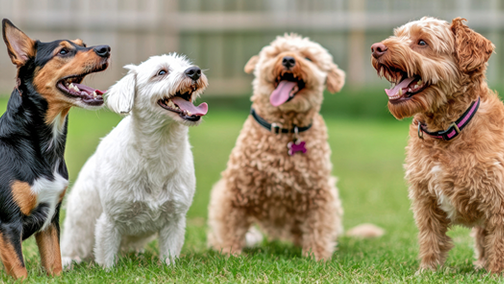Training Your Dog for a Reliable Recall Using Fun Games
Developing a fast and reliable recall with your dog can be both effective and enjoyable by incorporating playful exercises into your training routine. The key to success lies in making sure your dog associates the recall command with positive experiences and enthusiastic rewards. Here’s how you can achieve that:
1. The “Here” Command Basics
When teaching your dog to come to you, the “Here” command should simply mean showing up. At this stage, don’t worry about having your dog sit in front of you. The goal is for your dog to eagerly appear when called, and your response should always be cheerful and encouraging.
2. Positive Reinforcement
Always use a happy and excited tone when calling your dog. Never call your dog to punish them or when you’re upset, as this could create negative associations with the recall command.
3. Tracking Game
Start with a simple tracking game to build your dog’s enthusiasm for the recall. Begin by calling your dog’s name followed by “Here” (e.g., “Charlie, Here”). As your dog approaches, place a treat on the ground, then immediately turn in the opposite direction and repeat the process. Over time, increase the distance by sliding the treat further away, encouraging your dog to grab it and rush back to you. This game sets the foundation for more advanced recall exercises.
4. Hide and Seek
To further enhance your dog’s recall, introduce a game of hide and seek. Start by incorporating the tracking game but begin to hide behind objects like a table or couch, with part of you visible. When your dog finds you, shower them with praise and affection. Gradually make the hiding spots more challenging as your dog becomes more skilled at finding you. The goal is for your dog to quickly respond and start searching as soon as they hear “Charlie, Here!”
5. Restrained Recall
Involve a helper to hold your dog’s collar while you walk out of sight. Call your dog cheerfully using the “Here” command. The moment your dog starts pulling toward you, have the helper release them. This exercise, when practiced regularly, strengthens your dog’s desire to reach you quickly when called.
6. Ping Pong Recall
This exercise requires at least two people standing in a loose circle, each armed with treats. Take turns calling your dog with “Charlie, Here,” encouraging your dog to move quickly between people. Initially, you may need to reach out with a treat close to your dog’s nose to grab their attention. As your dog becomes more responsive, increase the distance between the participants, continuing to take turns calling and rewarding.
7. Leash Practice Drills
During your walks, suddenly take five to seven steps backward while clapping and cheerfully saying “Charlie, Here!” When your dog spins around and chases you, stop and reward them with enthusiastic praise and affection. If needed, crouching down can help encourage your dog to come to you faster.
These fun and interactive games not only improve your dog’s recall but also strengthen the bond between you and your pet. By consistently using positive reinforcement, your dog will learn to respond quickly and happily whenever you call.































